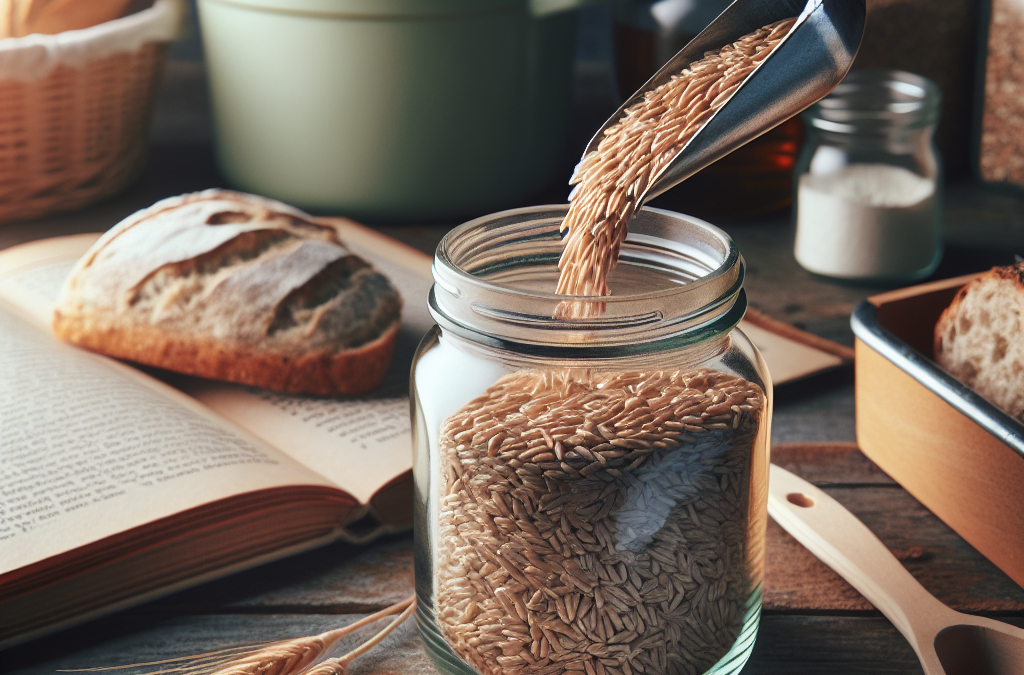Table of Contents
- Proper Storage Conditions for Whole Wheat
- Using Air-Tight Containers
- Managing Moisture and Humidity
- Monitoring Shelf Life and Freshness
Proper Storage Conditions for Whole Wheat
When it comes to storing whole wheat, environment matters. I remember the day my batch of whole wheat went bad because it was shoved in any old cupboard. Understanding your environment is crucial. Keep it cool, dry, and far from sunlight. Think of wheat as a small furry pet that doesn’t like it hot.
Temperature control is key. You might not need a fancy contraption. Just avoid cupboards next to your oven or in direct sunlight. Heat and light can make your wheat go stale or worse – rancid! Let’s save that for compost, not bread.
And ventilation? That’s a no-go. While it’s great for freshening up a room, it’s a nightmare for whole wheat. You want to keep odors and insects far away. That’s why I’ve learned to love my pantry. It’s the perfect retreat for my whole wheat supply!
Using Air-Tight Containers
I can’t emphasize enough the wonders of an air-tight container. Picture this: an unwanted moisture raid! That’s what happens if your container isn’t sealed right. So grab the best, whether it’s glass, BPA-free plastic, or stainless steel.
When choosing containers, bigger isn’t always better. You want to fill them up, so there’s less air to cause oxidation. A great tip I learned? Just reuse what you have at home. Old, clean jars? Perfect! It’s all about that snug fit.
Trust me, you’ll thank yourself when those pesky pantry moths or weevils give up and move on. Keep ‘em at bay with a top-quality seal. Now, that’s peace of mind, and fresher wheat for our next baking adventure.
Managing Moisture and Humidity
Moisture is the ultimate buzzkill for storing whole wheat. But I’ve got some tricks up my sleeve. First up, dehumidifiers. They aren’t just for damp rooms; they’re a lifesaver for keeping your wheat fresh and dry.
Can’t get your hands on a dehumidifier? No worries. Silica gel packs and even dry rice can be your sidekicks. Toss one in with your wheat and bam! You’ve got yourself a mini-moisture control system.
Remember, it’s all about a game of balance. You want reduced humidity but not a Sahara desert. Keep an eye on it, and you’ll ensure your wheat doesn’t clump or spoil. It’s all about that perfect harmony.
Monitoring Shelf Life and Freshness
Whole wheat isn’t immortal. Keep tabs on how long it’s been hanging around. From my misadventures with stale wheat, it’s smarter to date your stash. You’ve got about 3 months at room temp before flavors nosedive.
Push beyond the room and opt for the freezer for longer storage. Double the life, double the fun, I say! And if you’re ever sniff-testing your wheat wondering, remember, fresh wheat has a sweet, nutty aroma.
Don’t underestimate your senses. Check the smell, look, and, if you’re brave, the taste. If it’s funky, time to toss. It’s better to be safe than sorry, especially when you’ve got a fresh loaf waiting to be baked.
FAQ
How long can I store whole wheat at room temperature?
Whole wheat can be stored at room temperature for about three months. For longer storage, consider freezing it.
What’s the best way to store whole wheat to keep it fresh?
Using air-tight containers in a cool, dry, and dark place is the best way to store whole wheat. This prevents moisture and pests from affecting the wheat.
Can I keep whole wheat with other baking ingredients?
It’s best to store whole wheat separately to avoid cross-contamination and potential exposure to moisture or odors from other ingredients.
How can I tell if my whole wheat is still good?
Fresh whole wheat has a sweet, nutty smell. If it smells off or funky, it’s time to dispose of it. Trust your senses!
Related Content
Auto Amazon Links: No products found.





